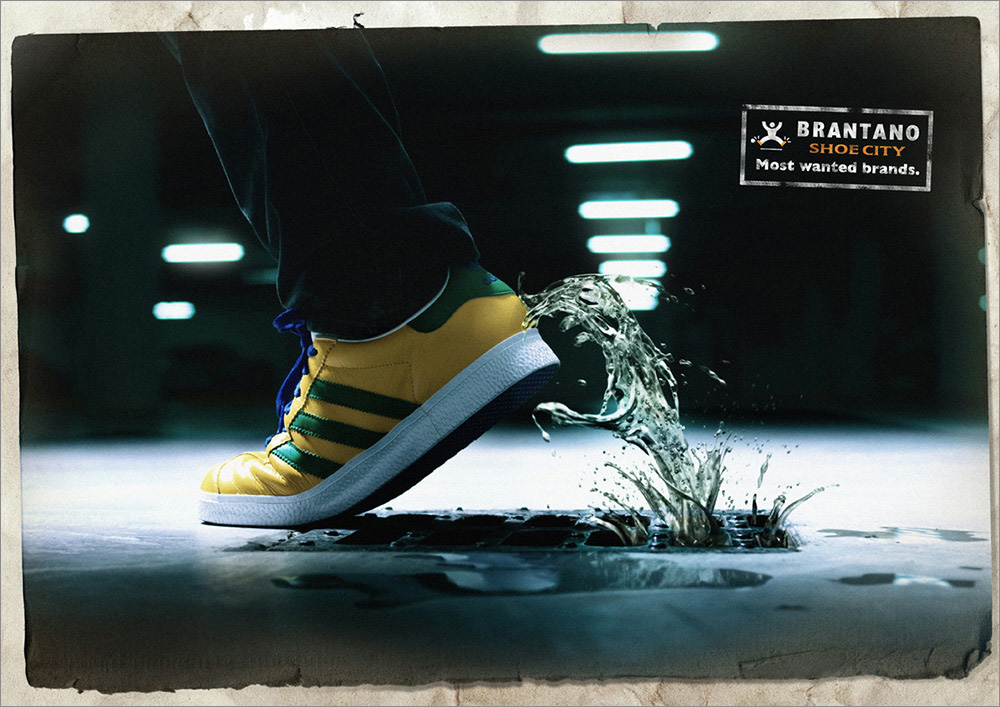Zuid-Afrika: Twee strepen mag, vier strepen soms niet
Supreme court of appeal of South Africa 28 februari 2013, 187/12 [2013] ZASCA 3 (Adidas AG and Another v Pepkor Retail Ltd) Zie eerder IEF 10695. Merkenrecht. "Passing off". Adidas beroept zich op haar bekende drie parallelle strepenmerk. Pepkor gebruikt twee of vier parallelle strepen op haar sportschoenen.
Zie eerder IEF 10695. Merkenrecht. "Passing off". Adidas beroept zich op haar bekende drie parallelle strepenmerk. Pepkor gebruikt twee of vier parallelle strepen op haar sportschoenen.
Het gebruik van twee en vier evenwijdige strepen op schoenen wordt als merkgebruik aangemerkt en niet als versiering of ter verfraaiing. Het is niet ontoelaatbaar dat Adidas de omvang van haar merkrechten oprekt. Het feit dat het drie-strepen-merk van Adidas zo bekend is, vergroot het verwarringsgevaar.
De tekens van Pepkor, bestaande uit twee brede strepen, zijn overduidelijk anders en niet verwarringwekkend gelijk aan de merken van Adidas. Twee schoenen van Pepkor met vier strepen erop maken wel inbreuk op de merkrechten en het wordt Pepkor verboden om deze schoenen aan te bieden alsof zij van Adidas af (kunnen) komen.
[11] The first appellant alleged that the respondent was infringing its rights in terms of s 34(1)(a) of the Act by using two and four parallel stripes of a particular configuration on six different items of sporting footwear, which included five trainers and one soccer boot5 and are depicted in the schedule at the end of this judgment.6 These are -
(1) The LDS Sports shoe bearing four stripes (annexures TB8 and AA16); [red. niet toegestaan]
(2) The Mens’ ATH Leisure shoe bearing four stripes (annexures TB9 and AA17); [red. niet toegestaan]
(3) The soccer boot bearing four stripes (annexures TB10, AA18 and AA19); [red. wel toegestaan]
(4) The Boys’ ATH Leisure shoe bearing four stripes (annexures TB11, AA20 and AA21); [red. wel toegestaan]
(5) The ‘Hang Ten’ shoe bearing two stripes (annexures TB12, AA22 and AA23); [red. wel toegestaan]
(6) The ‘Girls Must Have’ shoe bearing two stripes (annexures TB13, AA24 and AA25). [red. wel toegestaan]
[25] When making the comparison it is permissible to refer to the trademarks as they are applied to the appellants’ sporting footwear. When this is done, it is immediately apparent, on first impression, that the four stripe marks on the respondents soccer boot (TB10) and the respondent’s Boys ATH Leisure Shoe (TB11) and the two stripe marks on the respondent’s ‘Hang Ten’ sports shoe (TB12) and the respondent’s ‘Girls Must Have’ shoe (TB13) are not similar to the first appellant’s trademarks and consequently that there is no likelihood of deception or confusion. That leaves the four mark stripe on the LDS Sportshoe (TB8) and on the Men’s ATH Leisure Shoe (TB9).
[34] It will be convenient to deal first with the alleged passing off of the ‘Hang Ten’ and ‘Girls Must Have’ shoes as the Superstar shoe. The most prominent feature of the Superstar shoe is obviously the three stripe trade mark. In my view the two stripe marks on the respondent’s shoes, which are widely spaced, are clearly different from the stripes on the Superstar shoes and are not confusingly similar to the appellants’ trade mark. In addition the Superstar shoe prominently features the adidas name and trefoil device on the back of the heel , the tongue of the shoe and the insole, while the respondent’s shoes prominently feature the ‘Hang Ten’ and ‘actif’ trademarks on the back of the heel, the tongue of the shoe and on the insole. The marks on the respondent’s shoes therefore clearly identify the products in such a way that the notional purchaser of the shoes would not be misled. The appellants have therefore not made out a case of passing off in respect of the Superstar shoe.
[39] (...) The order of the court a quo dismissing the application with costs is set aside and replaced by the following order:
‘(a) The respondent is interdicted and restrained from infringing the first applicant’s rights acquired by the registration of trade-marks numbers 1957/01959, 1995/12283, 1980/6446 and 2000/18582 (‘the registered trademarks’) by using in the course of trade in relation to goods for which the registered trademarks are registered, a mark consisting of four parallel stripes of a colour or material different from the colour or material of the footwear, and on the outside of the uppers of the footwear, to which they are applied, as represented in annexures TB8 and TB9 to the founding affidavit of Timothy George James Behean (‘the infringing marks’) or any other mark so nearly resembling the registered trademarks as to be likely to deceive or cause confusion as contemplated in s 34(1)(a) of the Trade Marks Act 194 of 1993 (‘the Act’);
























































































